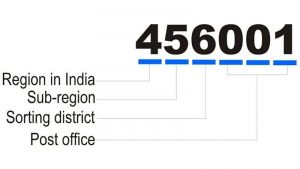Postal Identification Number:

The 75th Independence Day coincides with another milestone in the country’s history — it was on August 15, 1972, that the Postal Identification Number (PIN) was introduced in India. As the PIN code turns, we look at its history and evolution.
- According to the Department of Posts, there were 23,344 post offices, primarily in urban areas, in India at the time of Independence.
- But, the country was growing rapidly and the postal network had to keep pace.
- The PIN code was meant to ease the process of mail sorting and delivery in a country where different places, often, have the same or similar names, and letters are written in a wide variety of languages.
- The PIN is made up of six digits.
- The first number indicates the postal region — Northern, Eastern, Western, Southern; and number 9, which signifies the Army Postal Service.
- The second number denotes a sub-region, and the third represents the sorting district.
- The remaining numbers narrow the geography further to the specific post office making the delivery.




